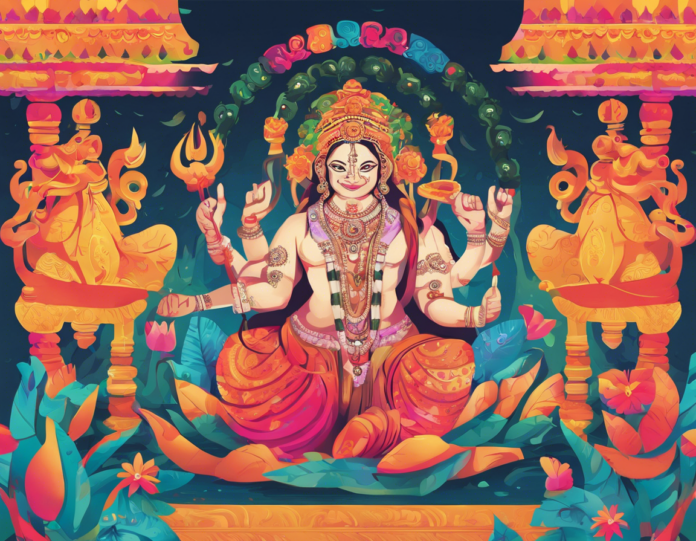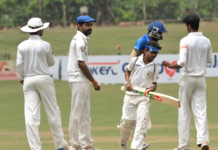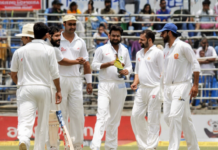Rang Panchami is a vibrant and joyous Hindu festival that is celebrated five days after Holi, marking the fifth day of the Hindu month of Chaitra. This festival, also known as Rangapanchami, is observed in some parts of India, particularly in Maharashtra, Madhya Pradesh, and parts of North India. While Holi is commonly associated with the throwing of colored powders and water, Rang Panchami signifies a more subdued and traditional celebration of colors.
The Significance of Rang Panchami:
Rang Panchami holds significant cultural and historical importance in Hindu mythology. The festival is believed to commemorate the divine love of Lord Krishna and Radha, where Krishna is said to have played pranks on Radha and the other gopis by drenching them in water and colors. The festival symbolizes the playful and joyful spirit of Lord Krishna and is a time to commemorate his mischievous yet endearing ways.
How Rang Panchami Is Celebrated:
Rang Panchami is celebrated with great enthusiasm in various parts of India. The day begins with devotees visiting temples to offer prayers and seek blessings. One of the key rituals of the festival involves applying gulal (colored powders) on the feet of the elders as a mark of respect. People then gather with family and friends to play with colors, dance to traditional music, and enjoy festive treats.
Traditional Foods and Sweets:
No Indian festival is complete without a wide array of delicious traditional foods and sweets. During Rang Panchami, people indulge in mouthwatering treats such as gujiya, malpua, thandai, and other regional specialties. These delicacies are shared among family and friends, adding to the festive spirit of the occasion.
The Symbolism of Colors:
Colors play a significant role in the celebration of Rang Panchami. Each color holds its own symbolic significance:
– Red symbolizes love and fertility
– Green represents new beginnings and harvest
– Yellow signifies knowledge and learning
– Blue is associated with the divine and the infinite
– Purple symbolizes power and luxury
Maintaining Safety During the Celebrations:
While Rang Panchami is a time for joy and revelry, it is important to ensure the safety and well-being of all participants. Here are some tips to celebrate Rang Panchami responsibly:
– Use natural and eco-friendly colors to avoid any skin irritations or allergies.
– Protect your eyes by wearing sunglasses or using protective eyewear.
– Stay hydrated and consume safe drinking water throughout the day.
– Be mindful of those around you, especially young children and the elderly.
– Respect the choices of individuals who may not wish to participate in the festivities.
Rang Panchami Beyond India:
In recent years, the spirit of Rang Panchami has transcended geographical boundaries, with people from various cultural backgrounds embracing the festival of colors. In countries like the United States, the United Kingdom, Australia, and Canada, communities come together to celebrate Rang Panchami, fostering cultural exchange and mutual understanding.
The Joy of Giving:
In the true spirit of Rang Panchami, the festival also highlights the importance of giving and sharing with those in need. Many charitable organizations and communities organize events to distribute food, clothing, and essentials to the less fortunate, spreading joy and happiness among all.
Embracing Tradition and Unity:
Rang Panchami is a time to reflect on the rich tapestry of Indian culture and tradition while celebrating unity and togetherness. The festival brings people of all ages and backgrounds together, fostering bonds of friendship and camaraderie that transcend barriers of caste, creed, and religion.
Frequently Asked Questions (FAQs):
1. What is the difference between Holi and Rang Panchami?
While both festivals involve the celebration of colors, Holi is celebrated with more vigor and enthusiasm, including water balloon fights and raucous festivities. Rang Panchami, on the other hand, is a more subdued and traditional celebration of colors, often observed with religious rituals and family gatherings.
2. Why is Rang Panchami celebrated five days after Holi?
Rang Panchami falls on the fifth day of the bright half of the Hindu month of Chaitra, hence the name “Panchami,” which means the fifth day. This signifies the culmination of the Holi celebrations and the continuation of the festive spirit through the observance of Rang Panchami.
3. What is the significance of applying gulal on the feet of elders during Rang Panchami?
Applying gulal on the feet of elders is a mark of respect and reverence in Hindu culture. It is a way of seeking their blessings and showing gratitude for their wisdom and guidance.
4. How can one celebrate Rang Panchami in a eco-friendly way?
To celebrate Rang Panchami in an eco-friendly manner, opt for natural colors made from flowers or herbs, avoid using synthetic dyes that may harm the environment, and dispose of waste responsibly by cleaning up after the celebrations.
5. Are there any regional variations in the way Rang Panchami is celebrated in different parts of India?
Yes, there are regional variations in the way Rang Panchami is celebrated across India. For example, in Maharashtra, people decorate the entrance of their homes with colorful rangoli patterns, while in Madhya Pradesh, there are processions and cultural performances to mark the occasion. Each region adds its own unique touch to the festivities.
6. Can non-Hindus participate in Rang Panchami celebrations?
Absolutely! Rang Panchami is a festival that welcomes people of all backgrounds to join in the celebrations and experience the joy of colors and camaraderie. It serves as an opportunity for cultural exchange and mutual respect among communities.
7. Is there a traditional outfit worn during Rang Panchami celebrations?
While there is no specific traditional outfit mandated for Rang Panchami, many people choose to wear bright and colorful attire to match the festive spirit of the occasion. Traditional Indian outfits such as sarees, kurta-pajamas, and lehenga-cholis are commonly worn during the celebrations.
8. What are some popular festive songs and dances associated with Rang Panchami?
During Rang Panchami, people often dance to traditional folk songs and music that celebrate the spirit of the festival. Popular folk dances such as Garba, Dandiya, and Bhangra are commonly performed during the celebrations, adding to the joyous atmosphere.
9. How long does Rang Panchami celebrations typically last?
Rang Panchami celebrations can vary in duration depending on the region and local customs. In general, the festivities may last for a day or two, with some communities extending the celebrations to multiple days of colorful revelry.
10. Are there any special prayers or mantras recited during Rang Panchami?
While there are no specific prayers or mantras exclusively associated with Rang Panchami, people may choose to recite devotional hymns, chant the names of Lord Krishna, or offer prayers to seek blessings for their families and loved ones during the festival.












